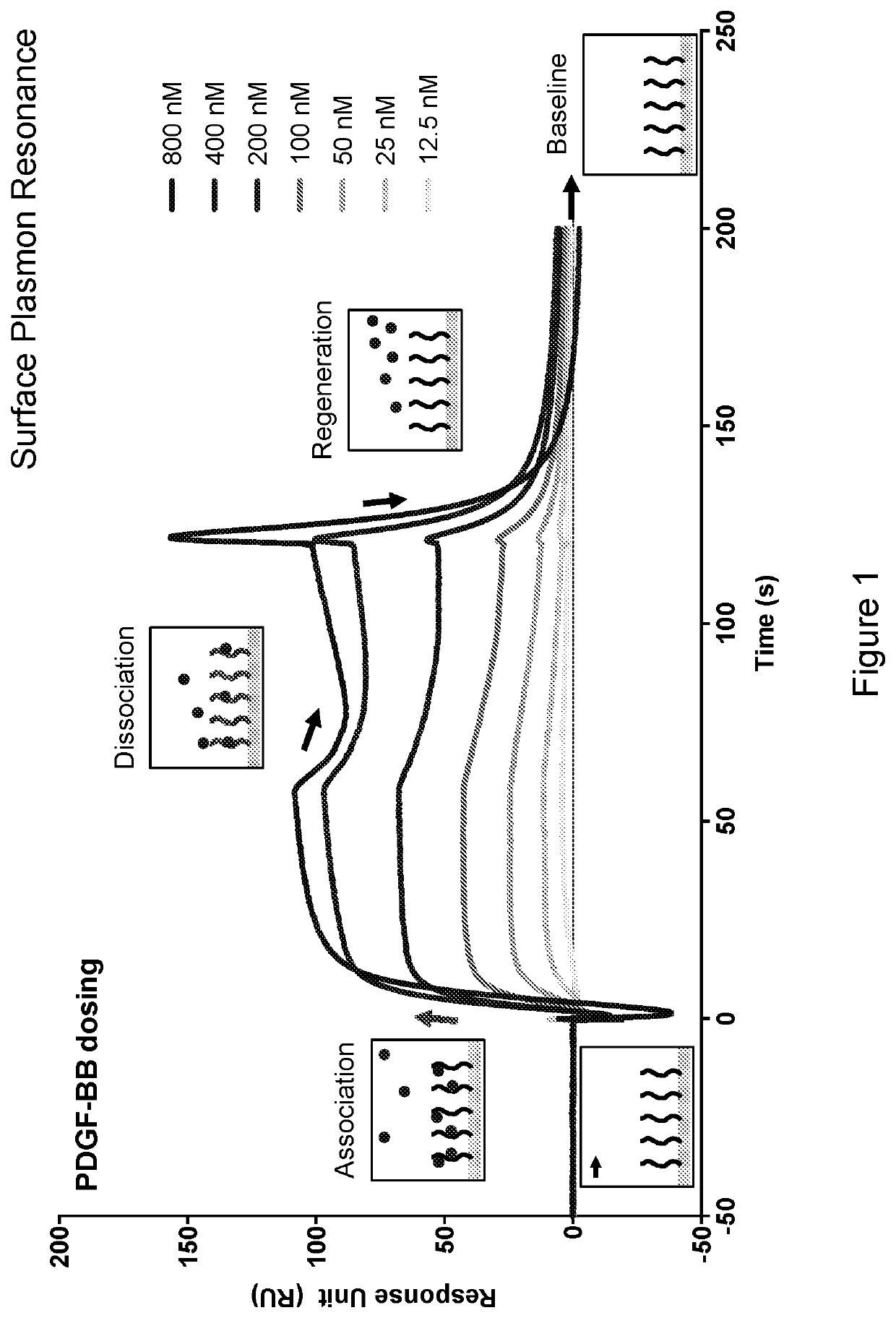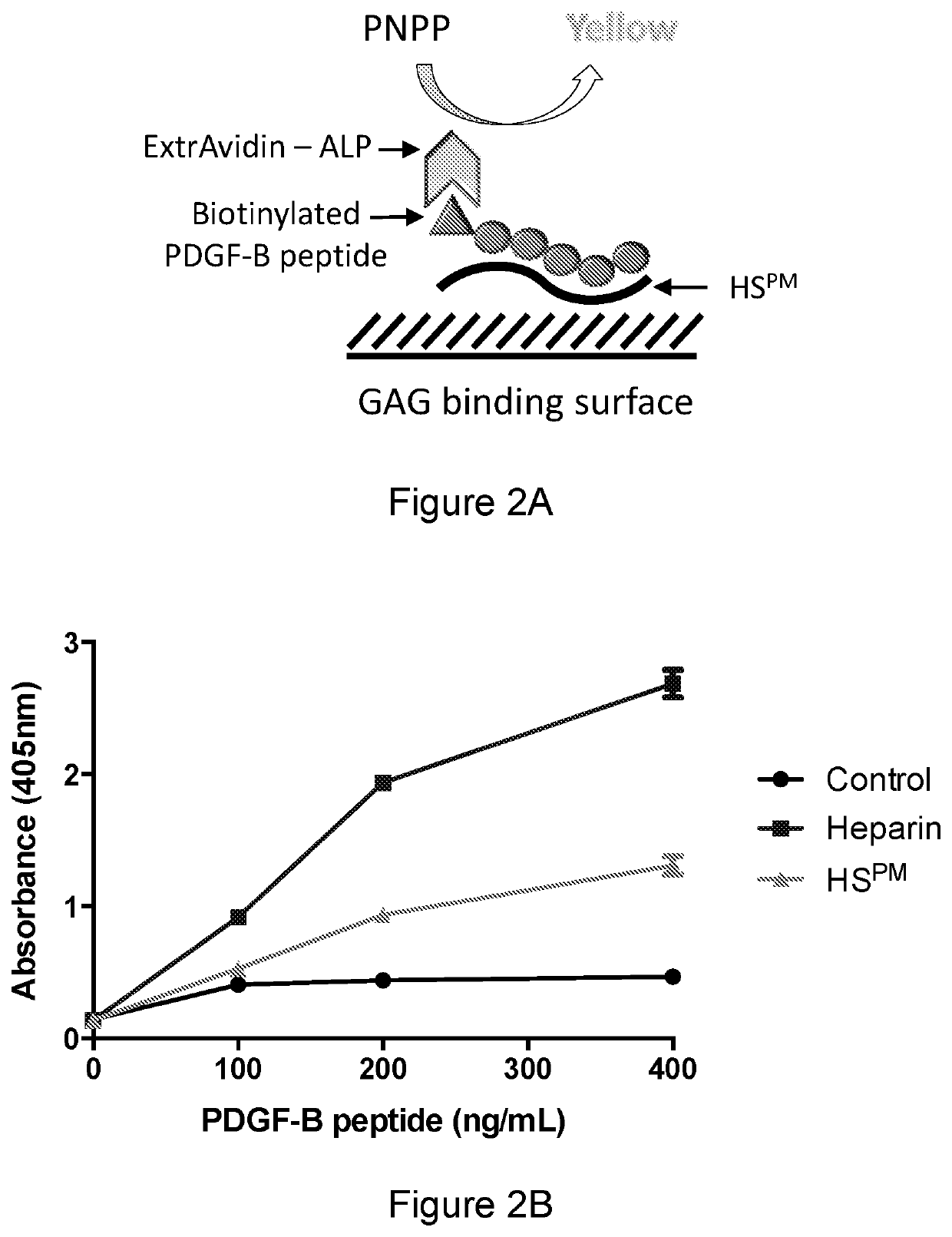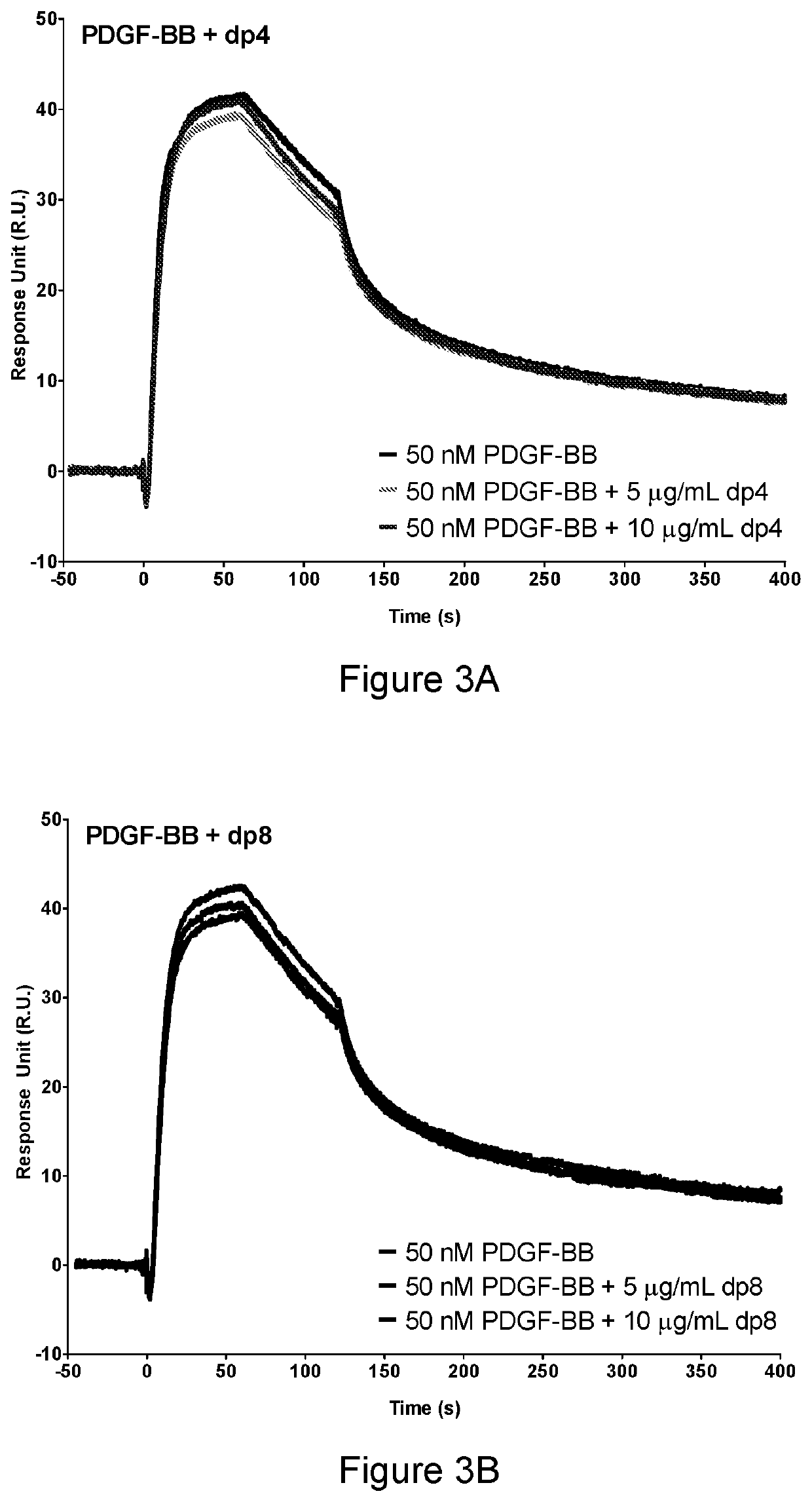PDGF-B /PDGF-BB binding variants of heparan sulfates
a technology of pdgf-bb and heparan sulfate, which is applied in the field of heparan sulfates, can solve the problems of excessive use of pdgf-bb, chronic non-healing wounds, and excess scarring, and achieve the effect of increasing the stability of a growth factor
- Summary
- Abstract
- Description
- Claims
- Application Information
AI Technical Summary
Benefits of technology
Problems solved by technology
Method used
Image
Examples
example 1
lasmon Resonance (SPR)
[0297]1. Heparin was biotinylated using N-hydroxysuccinimide-biotin (NHS-biotin) (Pierce).[0298]2. Streptavidin (SA) sensor chip (GE Healthcare) was coated with biotinylated heparin using an in-built immobilisation protocol on Biacore T100 (GE Healthcare), with a targeted 40 response units (RUs).[0299]3. Recombinant PDGF-BB (R&D) was prepared at 12.5 nM to 800 nM concentrations in HBS-EP-0.1 running buffer (10 mM HEPES, 150 mM NaCl, 3 mM EDTA, 0.1% Tween-20 (v / v) pH 7.4).[0300]4. PDGF-BB samples were then injected over the heparin-coated surface at a flow rate of 30 μL / min for 120 s, with HBS-EP-0.1 being subsequently passed over the surface for a further 600 s to monitor PDGF-BB dissociation. After dissociation, the sensor surface on the chip was regenerated by 2 washes of 2 M NaCl injected at 30 μL / min for 60 s.
Results:
[0301]PDGF-BB binds to the heparin coated chip in a dose dependent manner (FIG. 1).
[0302]50 nM PDGF-BB was selected for use in the competition...
example 3
f Heparin Dp4-24 to PDGF-BB
Competition Protocol:
[0317]1. Heparin and heparin derivatives (Iduron), including dp fragments and desulfated heparins, were prepared at 5 μg / ml and 10 μg / ml in HBS-EP-0.1 running buffer.[0318]2. 50 nM PDGF-BB was prepared in HBS-EP-0.1 running buffer.[0319]3. PDGF-BB and heparin / heparin derivatives were mixed.[0320]4. PDGF-BB samples were then injected over the heparin-coated surface at a flow rate of 30 μL / min for 120 s, with HBS-EP-0.1 being subsequently passed over the surface for a further 600 s to monitor PDGF-BB dissociation. After dissociation, the sensor surface on the chip was regenerated by 2 washes of 2 M NaCl injected at 30 μL / min for 60 s.
Results:
[0321]Binding of PDGF-BB increases with longer dp fragments (FIGS. 3 and 4).
[0322]The increased affinity that PDGF-BB has to the dp fragments results in decreased PDGF-BB binding to the heparin coated chip.
example 4
on is Crucial for PDGF-BB Binding
[0323]The competition protocol from Example 3 was used, using the following heparin and heparin derivatives:[0324]Desulfated heparin (Iduron): heparin that has been digested with enzymes to remove specific sulfations[0325]2-O-deS: 2-O-desulfated heparin[0326]6-O-deS: 6-O-desulfated heparin[0327]N-deS: N-desulfated heparin[0328]N-deS / R: N-desulfated Re-acetylated heparin
Results:
[0329]N-sulfation is crucial for PDGF-BB binding (FIGS. 5 and 6).
PUM
| Property | Measurement | Unit |
|---|---|---|
| pH | aaaaa | aaaaa |
| capillary voltage | aaaaa | aaaaa |
| pH | aaaaa | aaaaa |
Abstract
Description
Claims
Application Information
 Login to View More
Login to View More - R&D
- Intellectual Property
- Life Sciences
- Materials
- Tech Scout
- Unparalleled Data Quality
- Higher Quality Content
- 60% Fewer Hallucinations
Browse by: Latest US Patents, China's latest patents, Technical Efficacy Thesaurus, Application Domain, Technology Topic, Popular Technical Reports.
© 2025 PatSnap. All rights reserved.Legal|Privacy policy|Modern Slavery Act Transparency Statement|Sitemap|About US| Contact US: help@patsnap.com



